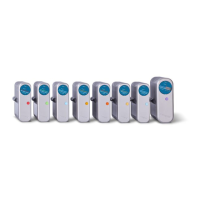ENGINEERING MANUAL OF AUTOMATIC CONTROL
CONTROL FUNDAMENTALS
35
CHARACTERISTICS AND ATTRIBUTES OF CONTROL METHODS
Review the columns of Table 4 to determine the characteristics and attributes of pneumatic, electric, electronic, and microprocessor
control methods.
Table 4. Characteristics and Attributes of Control Methods.
Pneumatic Electric Electronic Microprocessor
Naturally
proportional
Requires clean dry
air
Air lines may cause
trouble below
freezing
Explosion proof
Simple, powerful,
low cost, and
reliable actuators
for large valves and
dampers
Simplest
modulating control
Most common for
simple on-off
control
Integral sensor/
controller
Simple sequence of
control
Broad
environmental limits
Complex
modulating
actuators,
especially when
spring-return
Precise control
Solid state
repeatability and
reliability
Sensor may be up
to 300 feet from
controller
Simple, remote,
rotary knob
setpoint
High per-loop cost
Complex actuators
and controllers
Precise control
Inherent energy management
Inherent high order (proportional plus integral) control,
no undesirable offset
Compatible with building management system. Inherent
database for remote monitoring, adjusting, and alarming.
Easily performs a complex sequence of control
Global (inter-loop), hierarchial control via
communications bus (e.g., optimize chillers based upon
demand of connected systems)
Simple remote setpoint and display (absolute number,
e.g., 74.4)
Can use pneumatic actuators

